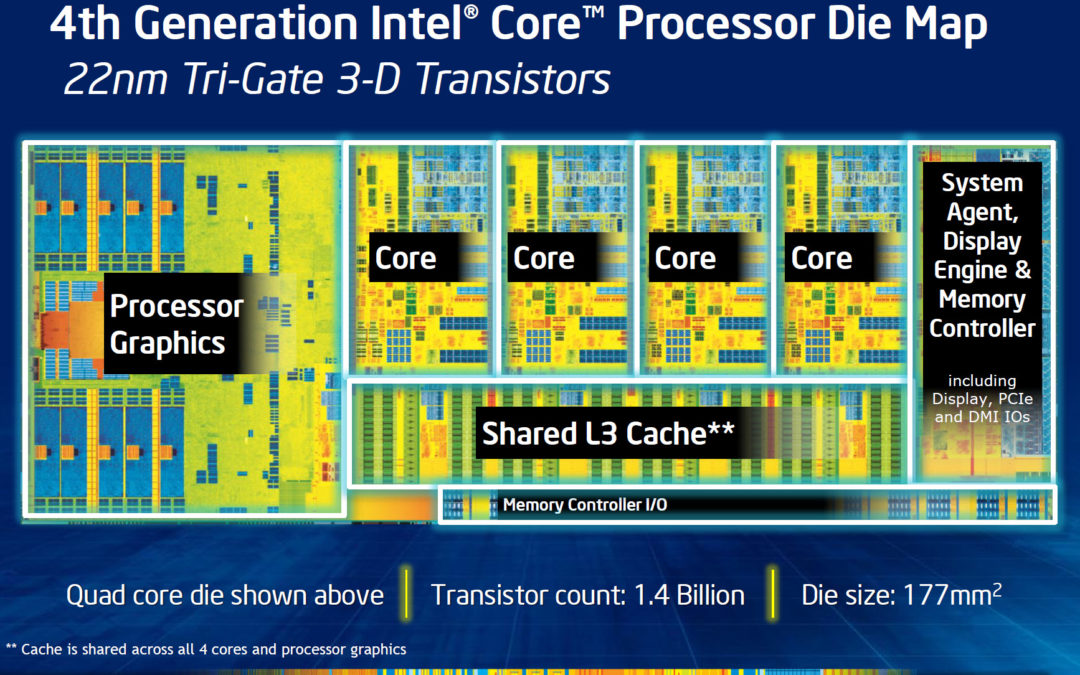Here we have all the technologies that are used in Intel’s 4th generation Core i Desktop processors. Let’s find out what kind of technologies have been applied to the 4th generation Intel core i CPUs.
– 4th generation Intel® Core™ processor (Haswell) Technologies –
Intel® Turbo Boost Technology 2.0 – Dynamically increases the processor’s frequency as needed by taking advantage of thermal and power headroom when operating below specified limits.
Intel® Hyper-Threading Technology – Delivers two processing threads per physical core. Highly threaded applications can get more work done in parallel, completing tasks sooner.
Intel® HD graphics — Enhanced 3D performance for immersive mainstream and casual gaming. Can support up to three UltraHD* (4K) displays and collage display.
Intel® Wireless Display — Wirelessly stream HD / 3D video and games to your TV or projector for presentations and entertainment.
Intel® Quick Sync Video — Delivers fast conversion of video for portable media players, online sharing, and video editing and authoring.
Intel® Clear Video HD — Visual quality and color fidelity enhancements for HD playback and immersive Web browsing.
Intel® InTru™ 3D — Stereoscopic 3-D Blu-ray* playback in full 1080p resolution over HDMI* 1.4 and premium audio.
Intel® Advanced Vector Extensions — A set of new instructions to improve software performance for floating point-intensive applications such as audio processing, audio codecs, and image and video editing applications.
Integrated Memory Controller – An integrated memory controller offers stunning memory read/write performance through efficient prefetching algorithms, lower latency, and higher memory bandwidth.
Intel® Smart Cache – The shared cache is dynamically allocated to each processor core, based on workload. This significantly reduces latency, improving performance.
Intel® Virtualization Technology – Allows one hardware platform to function as multiple “virtual” platforms. Offers improved manageability by limiting downtime and maintaining productivity by isolating computing activities into separate partitions.
Advanced Encryption Standard New Instructions – New AES instructions add hardware acceleration to AES algorithms and speeds up the execution of AES applications.
Thermal Solution for Boxed Processors – Includes a four-pin connector for fan speed control to help minimize the acoustic noise levels generated from running the fan at higher speeds for thermal performance.
Information from Intel’s official website. http://www.intel.com






